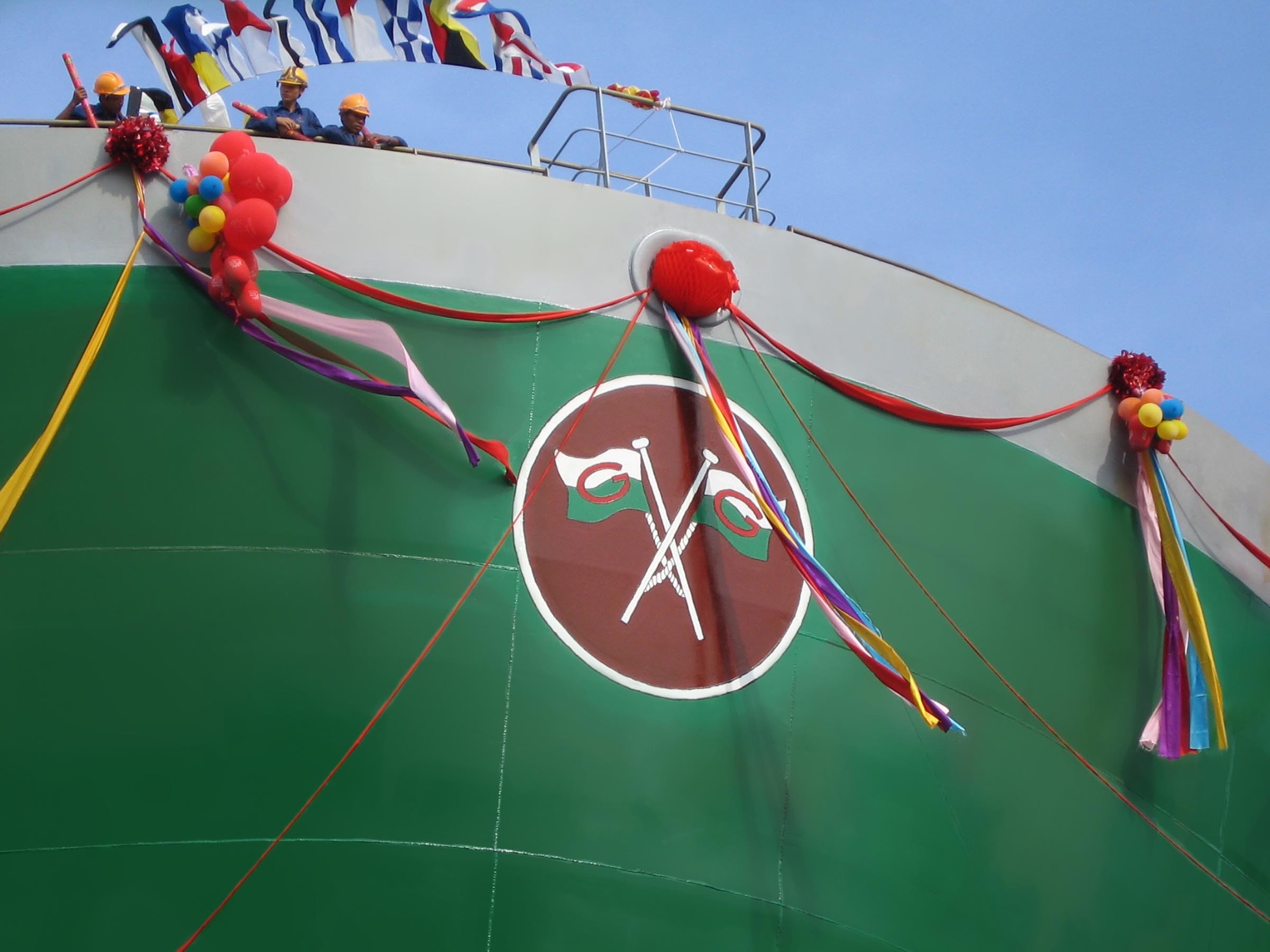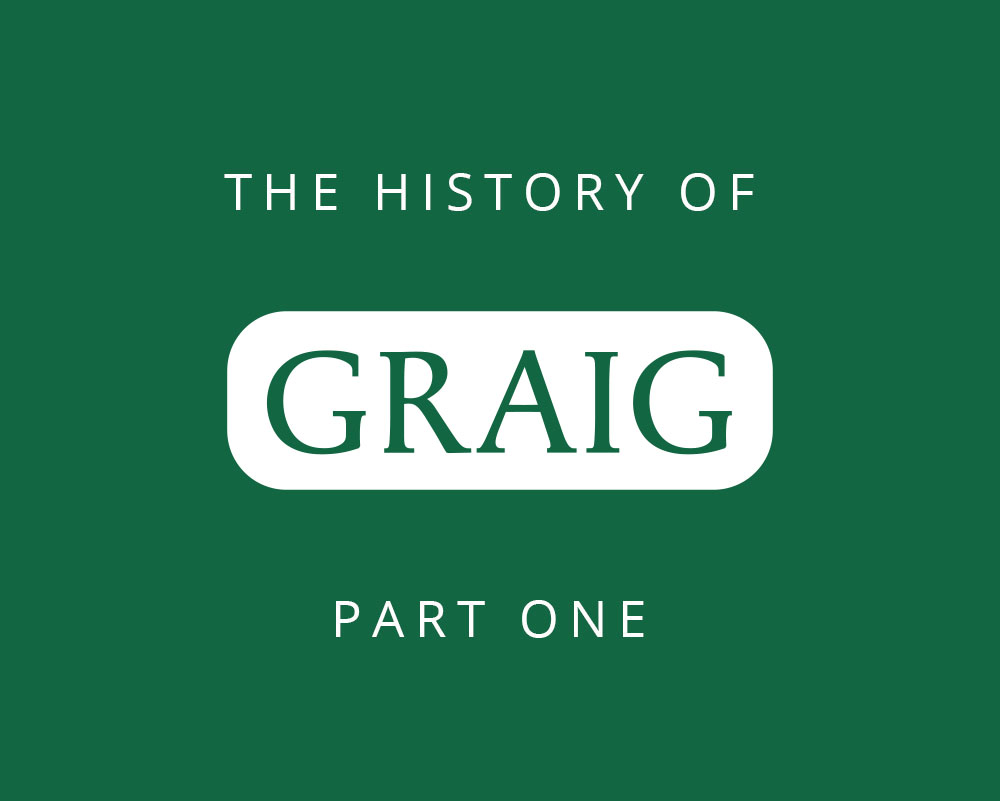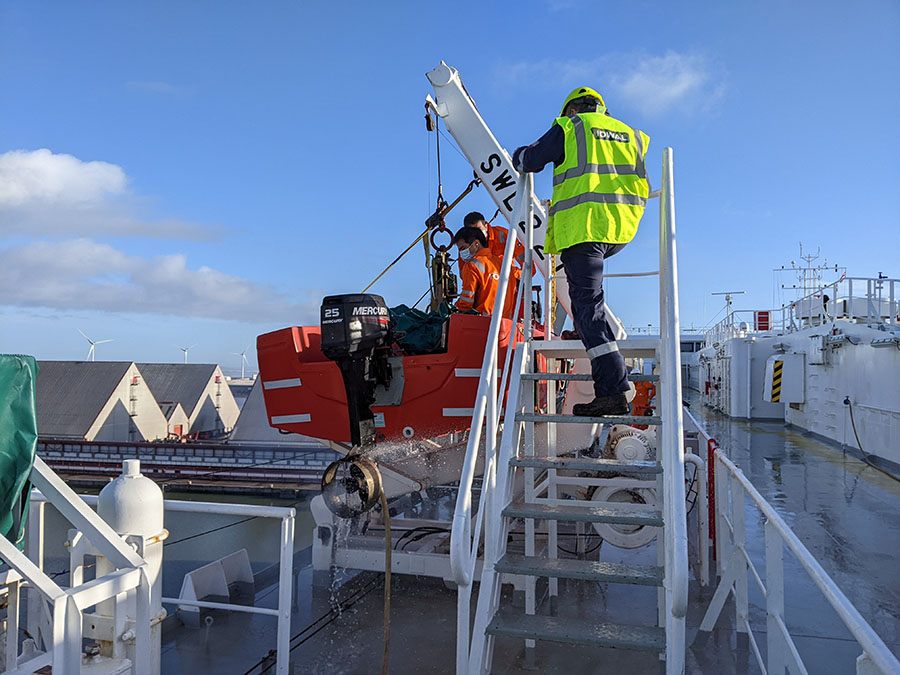Graig Shipping plc is a remarkable survivor. Whereas most family-owned British shipping companies have long since disappeared, Graig has succeeded in overcoming global conflict and periods of profound shipping depression to celebrate its centenary in 2019. What makes its survival even more remarkable is that it was born in an age of unprecedented commercial upheaval at Cardiff following the end of the First World War, when about 130 new shipping companies were promoted in the city in an eighteen-month boom that lasted from November 1918 to May 1920. Graig is also the sole survivor of that incredible episode, when it was as if Cardiff’s shipowning community was gripped by a collective frenzy.
Setting the scene
Cardiff developed rapidly during the nineteenth century from a quiet borough town of some two thousand souls in 1800 to a bustling metropolis with nearly 170,000 inhabitants by 1901. This growth was chiefly predicated on the expansion of the international trade in south Wales steam coal, the premium fuel of the age. Coal exports grew from just 6,500 tons from the newly-opened Bute West Dock in 1839 to a pinnacle of 10.5m. tons in 1913. The coal trade had also given rise to a thriving shipowning community in Cardiff, which by the eve of the First World War owned nearly 300 vessels, mostly ocean-going tramp steamers, aggregating some 860,000 gross tons.
Trade was badly disrupted by the First World War and the cessation of hostilities in 1918 was welcomed by shipping companies in Cardiff and across the United Kingdom. No longer were their vessels at the mercy of enemy attack and shipowners looked forward to the relaxation of various impositions that had been made upon them as a result of the conflict. The most restrictive of these had been the Excess Profits Duty, first imposed at fifty per cent on all increases over and above pre-war profits in 1915, and raised to eighty per cent in 1917. Reduced to forty per cent in May 1919, and with every likelihood of its being abolished in the near future, this was seen as a positive stimulus to the shipping industry. All merchant shipping had been under government control since 1917 and this imposition was lifted on 1 March 1919. And shipyards were also freed from government control at this time, thus enabling shipping companies to place orders for newbuildings using capital accumulated during the war in the form of compensation paid out for wartime losses.
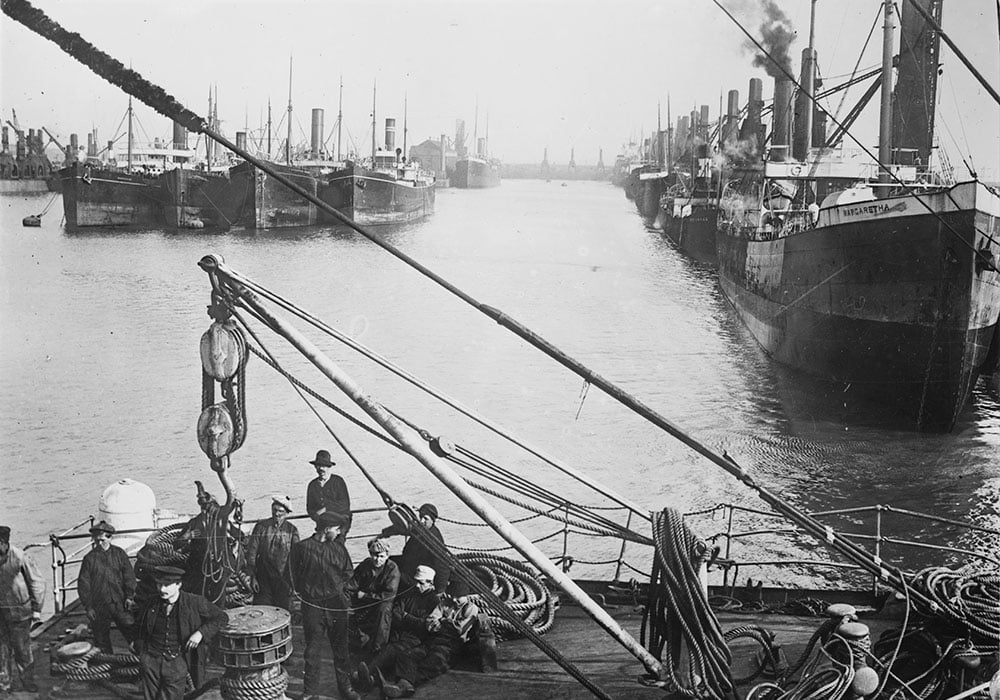
Cardiff Docks in the 1920, close to Graig's current offices
During the last two years of the war, the government had embarked upon a substantial construction programme to replace merchant ships lost by enemy action. There was a widespread notion at the end of the war that these ships were needed to replace wartime losses, though in fact the British merchant fleet in 1919 was just 700,000 gross tons less than in 1914. The apparent shortage of tonnage available on the immediate post-war market was in fact caused by two major factors – the slow, gradual release of merchant ships from government charters and the fact that there were severe delays at many ports as the economy gradually reverted to a peacetime basis. These factors – post-war optimism, the reduction of Excess Profits Duty, the deregulation of shipping and an apparent shortage of shortage of tonnage appearing for charter - led to the boom of 1919-20 whose effects were felt with particular profundity at Cardiff.
The result was that both freight rates and tonnage prices advanced substantially at that time. Some of Cardiff’s long established shipowners such as Lord Glanely (W.J. Tatem) and the W. and C.T. Jones Steamship company, took advantage of the boom by selling off their entire fleets at the time, netting substantial gains for themselves and their fortunate shareholders. But if sagacious shipowners such as these decided to withdraw from shipping during what the perceived correctly was likely to be an unsustainable boom, there were also plenty of relatively inexperienced newcomers to the shipping industry who were ready to participate in and unknowingly exacerbate the boom by floating new shipping companies to acquire almost any tonnage at inflated prices. In the eighteen months leading up to June 1920, no fewer than 130 shipping companies were promoted at Cardiff, seeking a total capital of some £14.5m. Typically, these companies tended to be promoted by businessmen from the edges of the city’s shipping circles, eager for ‘a quick buck’, who then invited one person with shipping experience – often a minor shipbroker or often just a clerk from an existing shipping company - to provide the necessary expertise in ship management. One such firm, named the Graig Shipping Co. Ltd., was incorporated at Cardiff on 15 July 1919 with a capital of £100,000 in £1 shares, and with offices at 27 James Street, Cardiff (moved soon afterwards to Imperial Buildings, Mount Stuart Square, Cardiff), at the heart of the city’s commercial and shipping district. It was the intention of the company to acquire the ‘C-type’ standard First World War 3099 gross ton steamship War Down, built by Wood, Skinner and Co. of Newcastle in 1918 for the UK Government.
Graig Shipping established
The Graig Shipping Co Ltd. was promoted by five directors, described in the company’s prospectus as follows:
- Frederick E. Jacob (Chairman) of ‘Glanwenny’, Bridgend, chairman of the Rhondda and Swansea Bay Railway Co. Ltd. and a director of the Oakwood Colliery Ltd. and the Exchange Steamship Co. Ltd.
- John Parry Edmunds of ‘White Lodge’, Whitchurch, Cardiff, a director of Edmunds and Radley Ltd. (spark plug manufacturers) and the Exchange Steamship Co. Ltd.
- Cadivor Edward Morrison James of ‘Cae Nicholas’, Lisvane, Cardiff, director of the Cwmaman Collieries Ltd. and the Rockwood Collieries Ltd.
- George Edgar Williams of ‘Plasnewydd’, Rhiwbina, Cardiff, shipstore merchant and shipping butcher.
- Idwal Williams of ‘Linden’, Westville Road East, Cardiff, ship manager.
Whereas all of the directors had considerable, though widely varying, commercial experience, only one of them, Idwal Williams, had a thorough grounding in the running of ships. He had been born in Cardiff on 15 December 1884 into a Welsh-speaking family, one of seven children of a coal trimmer whose origins were in the village of Tongwynlais and Llanilltud, just north of the city. Having toyed with joining the teaching profession after leaving school, he eventually went to work as a clerk in the Cardiff office of the Bristol Steam Navigation Co. Ltd. which ran regular services from the Bristol Channel to Irish and near-continental ports. Here, he gained invaluable experience which he took with him when he later assumed a post as assistant accountant at Furness Withy’s Cardiff office in 1980. Injuries to his legs sustained in a railway accident in 1893 meant that he was conside
red unfit for military service in the First World War and he headed a skeleton staff in the Furness Withy office during the war. When he left the company to join Graig Shipping, he took with him office boy Colum Tudball, who would eventually become Graig Shipping’s managing director.
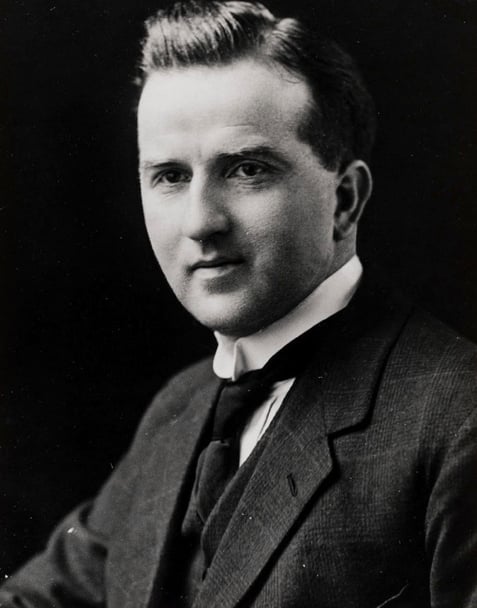
It is most unfortunate that the company’s original shareholders’ list of 1919 no longer survives. Nevertheless, it is known that the entire issue was subscribed, with a fifth of the capital held by the directors, who were expected to subscribe at least £500 each. A large number of shares were sold to shareholders in Wigan by a share salesman acting on commission who must have knocked on scores of doors in the Lancashire town to effect his sales! Many other Cardiff shipping companies, particularly Reardon Smith, also found the inhabitants of the industrial towns of Lancashire and Yorkshire particularly willing to invest in shares in their respective ventures.
The agreement to acquire the War Down was signed on 24 June 1919 and the vessel was taken over from government ownership on the Tyne on 27 October 1919; she had previously been engaged in the transport of supplies from the UK to Archangel for the ‘White Russian’ forces. Eventually renamed Graig (although the prospectus suggests that the name Graigwen had been considered), her cost to the company was £140,000, with the £40,000 over and above the nominal capital being covered by a loan from the company’s bankers, the National Provincial Bank. Though owned by the Graig Shipping Co. Ltd., she was placed under the day-to-day management of the new partnership of Idwal Williams and Company, comprising C.E.M. James, George Williams and Idwal Williams, established a fortnight earlier on 15 October. The customary management arrangements applied, with Idwal Williams and Co. receiving a commission of 2.5% on gross earnings of Graig Shipping whilst the Graig was on voyage charters, doubling to 5% should the vessel be on time charter.
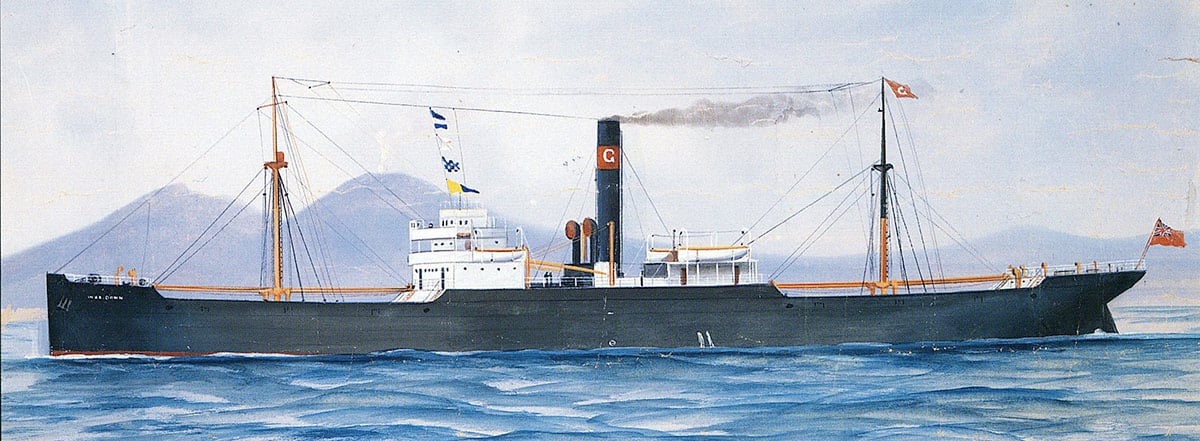
An early portrait of the first Graig
An early portrait of the ship under her new ownership (below) suggests that Graig Shipping originally adopted funnel colours of a white ‘G’ on a red band on a black funnel, with a white ‘G’ on a red background as the houseflag, though a photograph of the vessel taken a few years later shows that the red ‘G’ on a white over green background, by which the company’s later ships were instantly recognisable, had been adopted. One notable alteration made to the ship was the heightening of the funnel to improve the natural draught in the fireboxes - all wartime-built standard merchant vessels had squat funnels to minimize their profiles at sea.
The new venture was exceptionally fortunate that in Idwal Williams it had a seasoned ship manager who recognised that the post-war shipping boom, still climbing towards its heights in the autumn of 1919, was most unlikely to last that long. There were numerous adverse developments looming on the horizon for the shipping industry in south Wales. German reparations coal stipulated by the Treaty of Versailles would soon flood previously-significant European markets, whilst the Black Sea grain trade had collapsed following the Russian revolution of 1917. And during the war, the lucrative coal trade to Argentina and Brazil had been infiltrated to a considerable degree by coal from the USA. Few shipowners fully realised these threats; most were content to enjoy the prevailing good times, with the rates being offered on the ‘spot’ market for individual voyage charters at the time being highly remunerative. Whilst those rates prevailed, Idwal Williams declared his intention in the prospectus to fix the Graig initially on a couple of such charters. Sensing, however, that the market was probably close to a sharp readjustment, he soon afterwards fixed the Graig with Mann, George and Company on an unusual two-year time charter to transport coal, not from south Wales, but from Lourenco Marques in Mozambique to Dar es Salaam in Tanganyika and/or Kilindini near Mombasa in Kenya, at a rate of 28s 6d per ton. Under the command of Captain Thomas Grafton Smith from Maesteg, the Graig sailed from South Shields on 30 October 1919 with a cargo of coal for Naples; she then ballasted out to Pensacola where she loaded an unknown cargo for Durban, before proceeding to take up her time charter on the south east African coast in early March 1920.
The crash in freight rates foreseen by Idwal Williams and a few others eventually hit in May 1920 and its effects soon reverberated to the east African coast, with a rate of just 4s 6d. per ton soon being offered on the ‘spot’ market for the same business as that upon which the Graig was engaged. Mann, George and Co. tried desperately to extricate themselves from the charter, apparently even offering to buy the Graig, but Idwal Williams and his fellow directors refused to countenance the offer, and the time charter was duly completed. The Graig eventually returned to south Wales, slipping into Barry dock on 28 December 1921, and was immediately offered for sale. She was sold to owners in Bilbao in March 1922 for £35,000, a sum which starkly reflected the decline in the market since 1919. However, this loss was more than offset by the income derived from the time charter – it had returned an overall profit of £93,151 - and ensured that the new company was in a healthy financial state at a time when scores of contemporary ventures established during the post-war boom were facing financial catastrophe.
.jpg?width=1000&name=Graig(2).jpg)
Graig’s first newbuilding. Graig (2) approaching Queen Alexandra Dock, Cardiff in the mid-1930s.
[National Museum of Wales]
